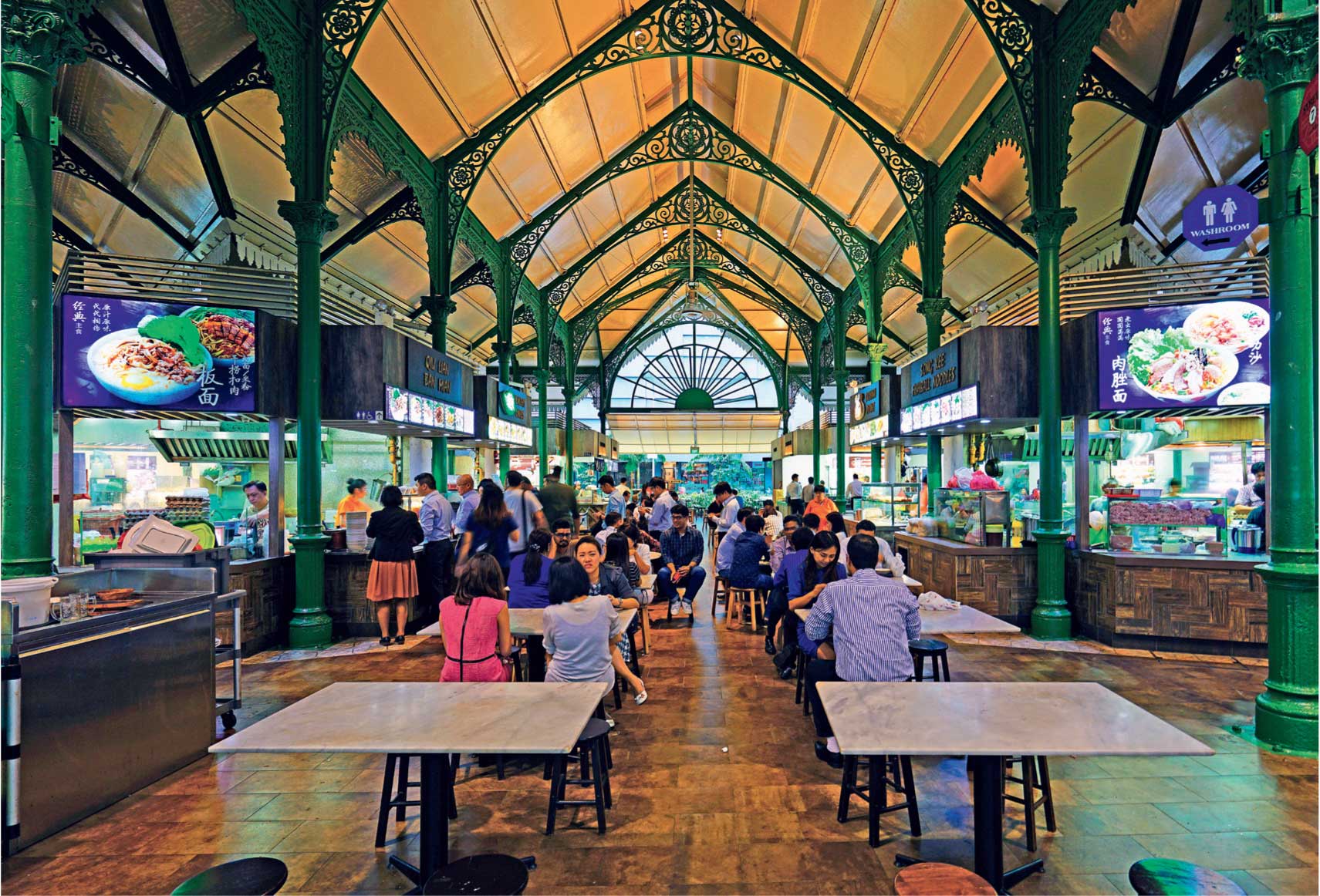Stories > Culinary Culture
Culinary Culture

Follow the swarm of sharply suited office workers in Singapore’s bustling Central Business District during lunch time and you’ll most likely end up at the iconic hawker centre, Lau Pa Sat (above). Such island-wide community dining spaces – where people from all walks of life gather to eat and mingle – have earned the Lion City’s hawker culture a place on the UNESCO Representative List of the Intangible Cultural Heritage of Humanity. Gazetted under the Preservation of Monuments Act in 1973, Lau PaSat was first built in 1824 as a timber and attap wet market, and subsequently refurbished in 2014 while keeping its original character intact. One of its highlights is the high-ceilinged octagonal structure, which has eight radial passageways sectioned by large
entrances, designed to maximise air circulation. The cast-iron filigree elements were prefabricated by an iron foundry in Scotland, while the imposing clock tower featuring bronze bells was made in the Netherlands. Today, Lau Pa Sat can seat up to 2,500 people who are served by 54 stalls selling local and international delicacies. While the Victorian structure is now dwarfed by modern skyscrapers that symbolise the city state’s meteoric rise on the world map, it continues to preserve one of the most important and beloved aspects of Singapore’s identity: the hawker culture.
